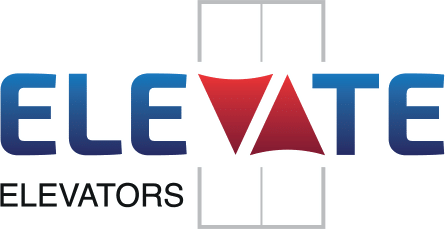ADVERTISEMENT
ADVERTISEMENT
HORACE — The Metro Flood Diversion Authority is now the improbable owner of former CHS grain elevators and more than two miles of abandoned railroad track that once served the storage facility.
The elevators, which dominate the skyline of this farming town turned suburban community, now stand empty — and the town’s mayor has his eyes on the property with the possibility of repurposing the landmark.
The unusual purchase was part of a workaround to prevent the need to build a costly railroad bridge to cross the 30-mile diversion channel, a move that will save $7.9 million to $8.8 million, according to diversion officials.
If the purchase and agreements involving the design and construction of three other railroad bridges hadn’t gone through, the metro flood-control project could have faced costly and lengthy delays that could have jeopardized the $3.2 billion project’s scheduled 2027 completion date.
City officials in Horace, aware the sale of the elevators was pending and they no longer would be in use, had preliminary discussions of preserving the towering vestiges of the town’s agricultural roots.
ADVERTISEMENT
“We’ve talked about it,” said Horace Mayor Kory Peterson. “People in town have different ideas.”
Suggestions included using the elevator site, which includes office buildings, to house a microbrewery, coffee shop or distillery.
While some might see the elevators as drab metal hulks, Peterson sees them as integral to Horace’s farming legacy.
“It has been an icon of the city for years,” he said. “We’d kind of like to see if we could preserve it.”
Other communities in the region have done creative makeovers of retired grain elevators and feed sheds, including one in western Montana that now serves as a microbrewery with an interior adorned with historic photos.
“It’s very unique,” Peterson said. “It’s kind of like preserving the history of the town.”
Similarly, a former elevator and feed shed in Chaska, Minnesota, has been converted into a restaurant.
“It was very well done,” he said. “You really went back in history when you ate there.”
ADVERTISEMENT
But city officials haven’t yet answered basic questions, including potential renovation costs, in the event the Diversion Authority would be willing to transfer the property. They have been waiting for the acquisition, which closed on Wednesday, March 22, to be completed.
“We didn’t want to get too far ahead of ourselves,” Peterson said.
The purchase of the Horace elevators and agreements involving the three railroad bridges are the result of lengthy negotiations with BNSF Railway, said Joel Paulsen, the Diversion Authority’s executive director.
“We’ve been working with BNSF for five or six years to get this all resolved,” he said.
The former CHS elevators in Horace were the only railroad customer on a 2.35-mile spur rail line, and that spur was only used a couple times each year.
It was cheaper for the Diversion Authority to buy the elevators and rail bed right-of-way — and to pay for added storage to the CHS-Dakota Plains Ag elevator in Kindred — than to build a railroad bridge that would receive such limited use, Paulsen said.
“That prevented us from having to build a $17 million bridge,” including operation and maintenance costs, he said.
Associated expenses included $1.2 million to acquire right-of-way from BNSF, $3.6 million to the Red River Valley & Western Railroad for operating rights and abandonment fees for the track segment and $3.1 million to CHS to expand capacity at its Kindred elevator.
ADVERTISEMENT
If the railroad bridge issues hadn’t been resolved, a report for project lenders estimated completion of the Red River diversion could have been delayed by as much as about 280 days.
As a result of the agreements and the purchase of the Horace elevators, the diversion project remains on schedule, with completion in time to allow it to operate in the spring of 2027.
“Right now, we’re still on track,” said John Shockley, a lawyer for the Diversion Authority who was involved in the painstaking negotiations.
ASN Constructors, which is building the diversion channel, and associated public works could have faced “acceleration costs” of $23 million, according to a report by Altus Group, which is monitoring progress on the project for lenders.
The Red River Valley Alliance, the consortium behind the project in partnership with the Diversion Authority, could have faced additional costs of $12.7 million.
Those potential delays and additional costs have been avoided because the bridge issues have been resolved, Paulsen and an executive with the Red River Valley Alliance said.
“I’m happy to report we were able to mitigate that issue,” Paulsen said. One way of making up time is to have simultaneous reviews of the railroad bridges, both from the perspective of the authority’s flood-protection needs and those of BNSF.
“So, you have really two sets of eyes looking at it,” Shockley said.
ADVERTISEMENT
BNSF wanted the three railroad bridges to have the capability of adding a second set of tracks in the future and wanted to have ownership and control of the bridges — conditions that were accepted in an agreement signed in January, Paulsen said.
Besides the three railroad crossings of the diversion channel, the project also required multiple agreements with the North Dakota Department of Transportation and utilities for crossings.
The Diversion Authority has reached more than 30 utility agreements to cross the channel, including pipelines and wires, with a similar number involving the 20-mile embankment.
“There’s a whole host of utilities that cross,” Shockley said.
A decision about what to do with the abandoned elevators and rail segment will be up to the Diversion Authority board. The property is of no use to the flood project, he said.
“We are not a rail company or a grain handling company,” Shockley said.
ADVERTISEMENT
